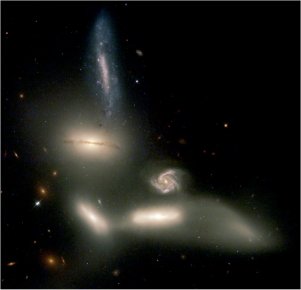Carl Keenan Seyfert was born in Cleveland, Ohio, on February 11, 1911, the son of a pharmacist. He completed his education through high school in Cleveland. He subsequently went to Harvard, where he initially was interested in medicine but then switched to astronomy. He obtained a B.S., M.S. (1933) and PhD (1936) in astronomy. His Ph.D. thesis was on "Studies of the External Galaxies," which was supervised by Harlow Shapley, and focussed on colors and magnitudes of galaxies.
In 1935 he married Muriel E. Mussells. They had two children, Carl Keenan Seyfert, Jr., and Gail Carol Seyfert.
In 1936, he joined the Yerkes Observatory staff, and helped establish the new McDonald Observatory. He was a staff member at McDonald from 1936 to 1940. There he investigated the properties, in particular spectroscopic properties, of B stars and large PM stars, and did some work on variables. In addition, he studied the distribution of colors, emission nebulae and clusters in galaxies.
From 1940 to 1942 he was at Mt. Wilson Observatory as a National Research Council Fellow. While there, he did pioneering research of nuclear emission in spiral galaxies. This resulted in a 1943 paper on galaxies with bright nuclei that emit light with emission line spectra, and exhibit characteristically broadened emission lines (Seyfert, Carl K., Nuclear Emission in Spiral Nebulae. Astrophysical Journal, 97, 28-40, 1943). These galaxies are since called Seyfert Galaxies. The most prominent example, identified as such by Seyfert, is Messier 77 (NGC 1068).






